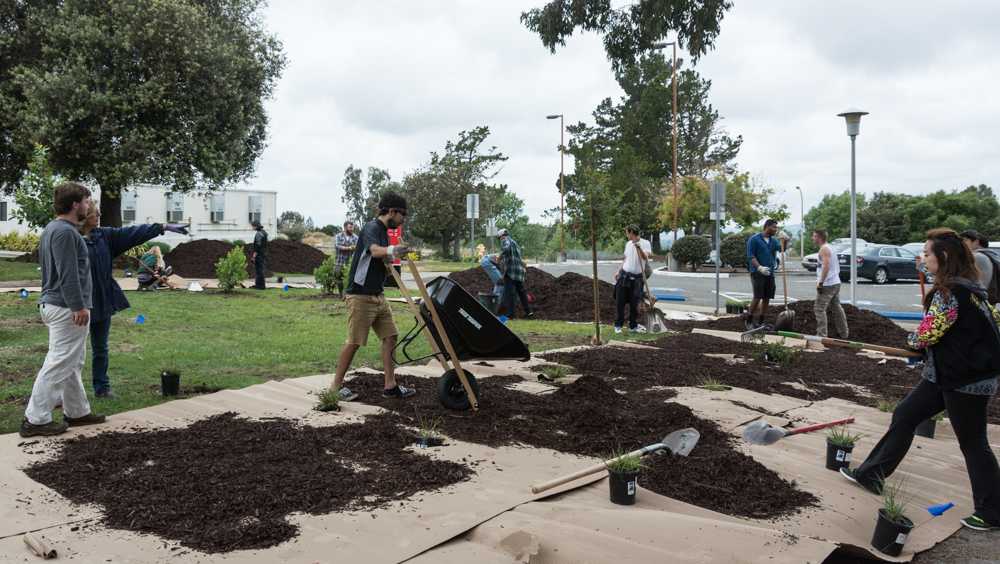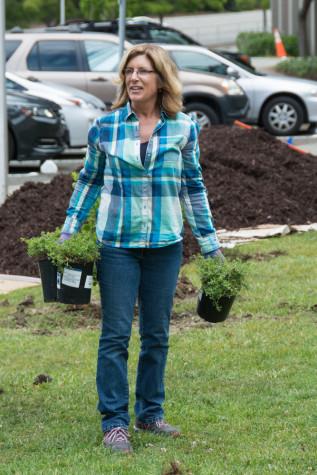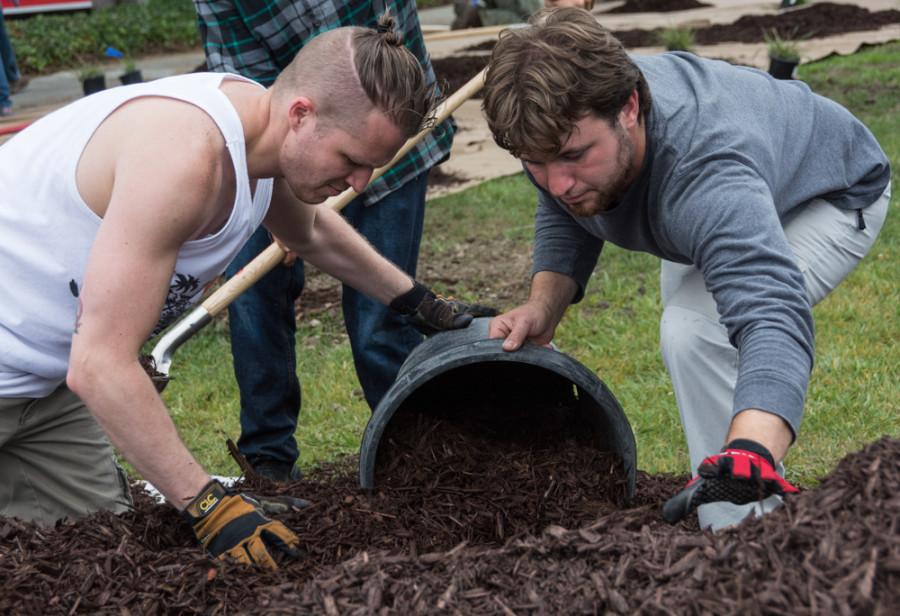Campus makes botanical conversion
May 27, 2015
A three-year project to convert several grass areas on campus to native plant botanical gardens wrapped up on Friday May 22.
Environmental studies instructor David Larson and more than 20 students in his field class, comprised primarily of seniors, completed phase three of a Campus Sustainability Project last week on a lawn area between Robinson Hall and the Music Building on the Hayward campus.
Phase One was on the west side of Robinson Hall and Phase Two on the south side of the building in Spring 2013 and Spring 2014 respectively. All of the new plants will have signs that explain what they are including their names.

Larson explained that, “Converting lawn to drought-tolerant botanical gardens is part of the university’s plan to reduce campus water consumption, a directive of the Chancellor’s Office and President Morishita has endorsed this activity. Lawns like these don’t do much but suck up water.”
Larson also said the signage that identifies the plants is really what makes a botanical garden, and that this is a direct effort to contribute to the CSUEB water consumption mandate since the gardens require little and in many cases no water at all.
According to the Water Conservation Plan released by the Facilities Development and Operations Department in the summer of 2014, “With the current status of the drought of California, on February 4, 2014, the California State University has mandated that campuses reevaluate water usage and implement strategies to reduce water consumption by 20 percent by 2020.”

The university has a blueprint of what we can do.
— Kathy Cutting
The lawn renovation project is just one of many projects that were developed as a result of the FDO 2014 report.
Kathy Cutting is a CSUEB Concord Campus Consultant and also a 2014 CSUEB graduate who participated in the previous projects with Larson’s class.
This time Cutting helped develop a sustainability demonstration project, and this was one of the many ideas she developed for CSUEB.
“I designed landscape plans for a turf replacement project primarily motivated by the water conservation effort of the campus,” Cutting said. “This site was one of the designs for that project. The university has a blueprint of what we can do.”
The lasting impact was not lost on students in the class who participated in the sustainability project.
“This is a great way to leave a footprint for all students, staff and everybody who sees this for the years to come,” Abhijeet Kulkarni, senior environmental studies major said. “This is much more than just a class. We get to apply what we learn in the real world and shadow professionals in the field we want to be in. This is a great experience.”

In addition to the garden, which according to Larson does not use water and attracts natural wildlife like butterflies and birds, there is a $900 sandstone bench in the center of the area which Larson feels will help create “tranquility” in the garden.
“It feels really good to do something that should not only help with our water use but [also] add to the biodiversity on campus,” Meghan Ferris, senior environmental studies major said. “Anything that reduces water use is pleasing and when you combine that with nature and plants, things can work better.”
Larson is hopeful that once the university sees what his class was able to accomplish in one day more projects will be approved on all of the CSUEB campuses.

















